This theorem states that in a linear network containing several independent sources, the overall response at any point in the network equals the sum of responses due to each independent source considered separately with all other independent sources made inoperative.
Question 1. Find the current through  resistance.
resistance.

Fig 1 Circuit Diagram
Solution:
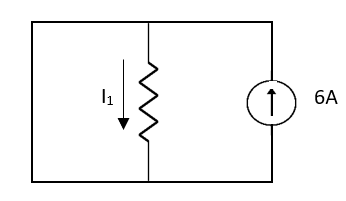
Fig 2 Short circuit 2V
 1 = 0
1 = 0
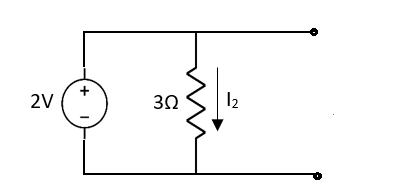
Fig 3 Open circuit 6A
 2 =
2 =
 1 +
1 +  2
2 
Key takeaway
Special Case
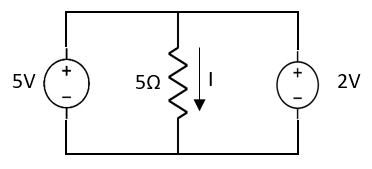
Fig 4 Circuit with two voltage sources
Since two voltage sources with different magnitudes in parallel cannot be connected as in a single branch, two different currents are not possible (if 5V then I = zero).
Question 2: Find Value of current I
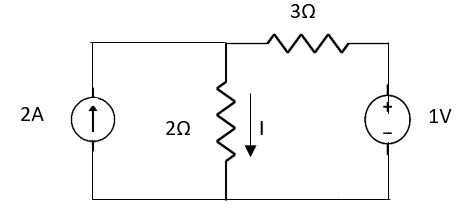
Fig 5 Circuit Diagram
Sol: Applying Superposition Theorem
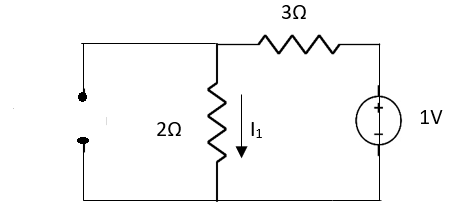
Fig 6 Circuit with 2A open circuit

Fig 7 Circuit with 1V short circuit
 1 =
1 = 
 2 =
2 = 
=
 1 +
1 +  2
2
= 
Thevenin’s Theorem states that a two-terminal network containing sources and passive elements is equivalent to a voltage source in series with the network impedance with all independent sources removed.

Fig 8 Two-port network

Fig 9 Thevenin’s equivalent of A
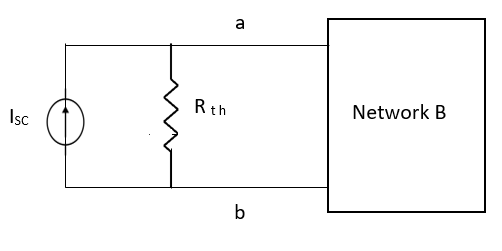
Fig 10 Norton’s equivalent of A
Norton’s Theorem states that a two-terminal network containing sources and passive elements is equivalent to an independent current source in parallel with the network impedance with all independent sources removed. The current of the current source has the same magnitude and reference direction as that of the current which would exist at the terminal in the original network if the terminals were short-circuited.
The short circuit current is then given as
 sc = Vth/Rth
sc = Vth/Rth
Norton’s equivalent is obtained by source conversion of Thevenin’s equivalent circuit.
CONDITIONS FOR APPLICATION
Firstly, open circuit terminal A and B.
2. If network A is operating with independent and dependent sources:
3. If the network is operating with only dependent sources:
Connect generation between A and B

First, open circuit terminal A and B.
Find out the voltage between A and B this is Vth

Fig 11 Terminal where we find Vth

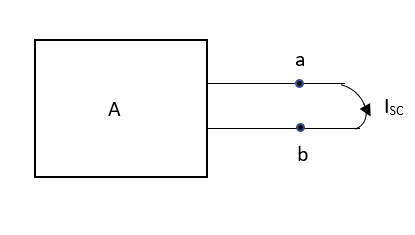
Fig 12 Finding Isc
Question: Find Vth and Rth for the circuit shown below?
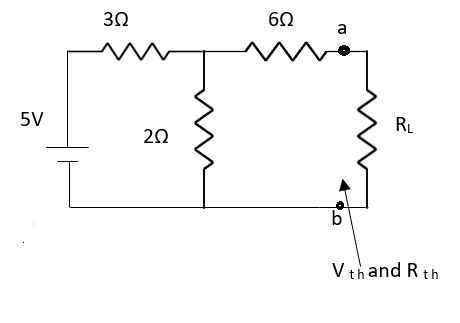
Fig 13 Circuit Diagram
Answer:
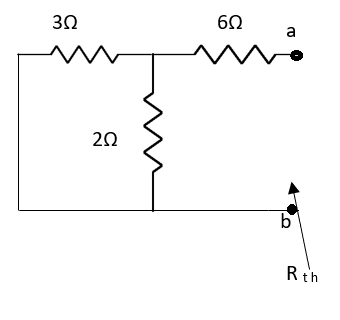
Fig 14 Circuit for finding Rth



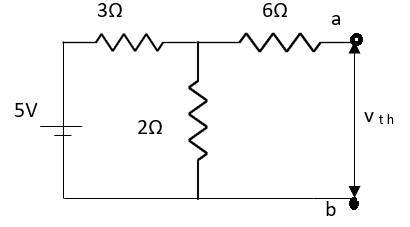
Fig 15 Finding Vth across a and b


Finding Isc from circuit directly:
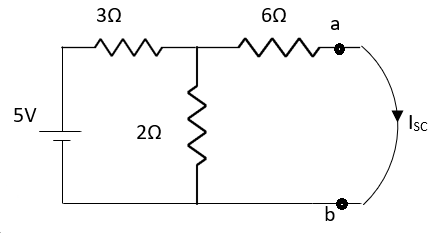
Fig 16 Finding Isc
By KCL,




Question: Find Vth and Rth across a and b?
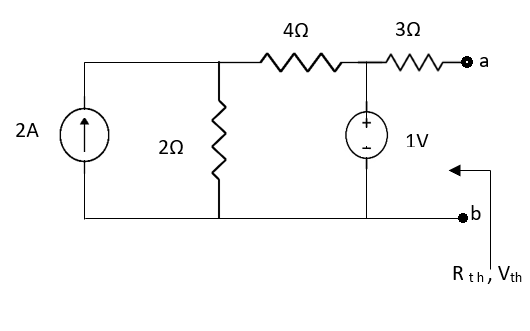
Fig 17 Circuit Diagram
Sol: Finding Rth

Fig 18 Circuit for Rth

Also, clear from circuit that Vth = 1V.
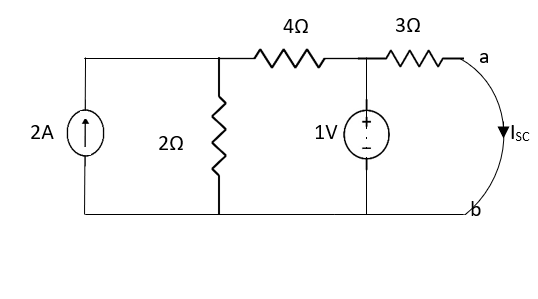
Fig 19 Circuit for Isc
By applying KVL we get,
1-3Isc=0
Isc= A
A
Que: Find Isc and Rth across terminal a and b?
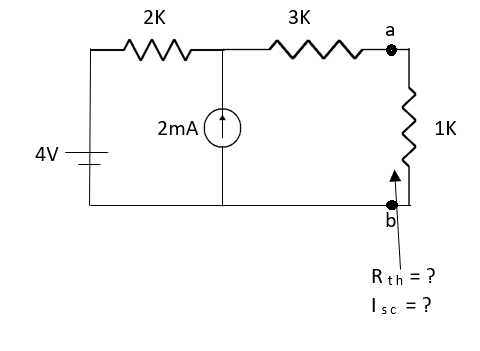
Fig 20 Circuit Diagram
Ans;

Fig 21 Circuit for finding RTh
Rth=3k+2k=5k
By applying KVL we get





Therefore, 
Question: Find the value of voltage Vx?
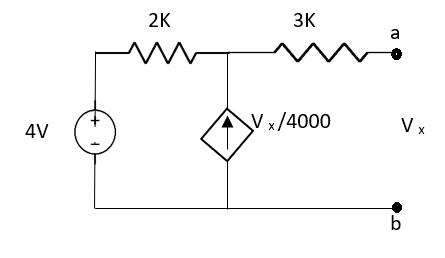
Fig 22 Circuit Diagram
Solution: For Rth
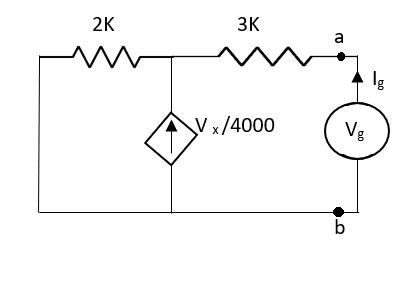
Fig 23 Circuit for finding Rth
By KCL,



But, 








By KVL,




Question: Find value of current I in the circuit?
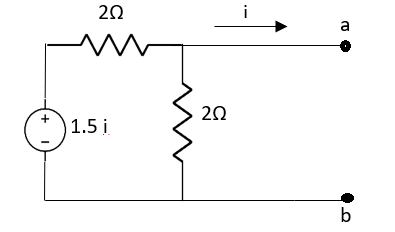
Fig 24 Circuit diagram
Solution: Since, no independent source is present so,
Isc = 0
And we know that,


Since Rth cannot be zero

Fig 25 Circuit for finding Rth



But 


Question: Find out the Norton’s equivalent
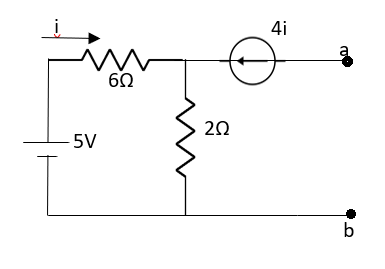
Fig 26 Circuit diagram
Solution:
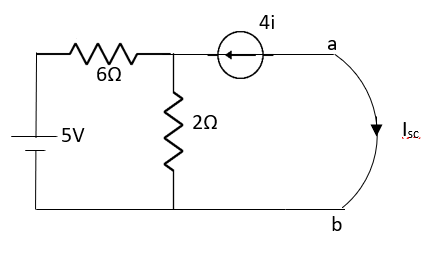
Fig 27 Circuit for finding Isc
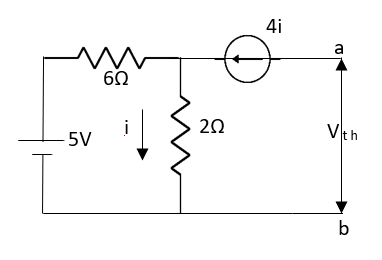
Fig 28 Circuit for finding Vth

Since, there is no significance of current source





 A
A
The maximum power transfer theorem states that to obtain maximum external power from a source with a finite internal resistance, the resistance of the load must equal the resistance of the source as viewed from its output terminals.
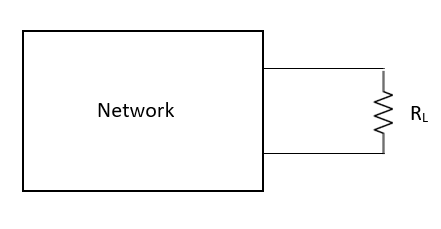
Fig 29 Network With load RL

where Rth is Thevenin’s equivalent resistance across a and b.

Fig 30 Circuit Diagram
Maximum power is absorbed by ZL when
Condition: 


Comparing real and imaginary parts


OR


Maximum power absorbed by ZL is









Key takeaway
For maximum power transfer 
Question: Find out the value of load resistance if power absorbed is maximum.

Fig 31 Circuit Diagram
Solution: find Thevenin’s equation

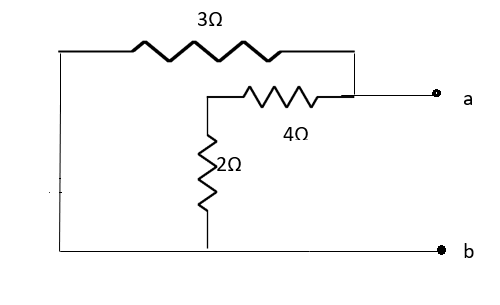
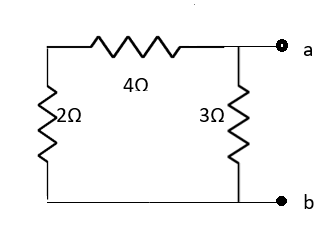
Fig 32 Finding Rth



Question: Find maximum power delivered is RL if its value is


Solution
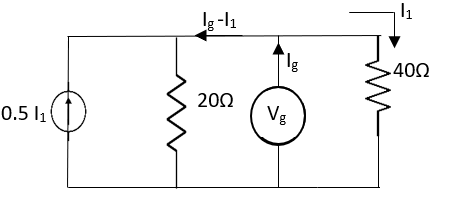
Fig 33 Circuit for finding Rth








Therefore, 
In a voltage source V (current source i) located at one point in a network produces current i (voltage v) at the second point in the network then the same voltage source V (current source) acting at the second point if produces the same current i at the first point the network is called as Reciprocal Theorem.
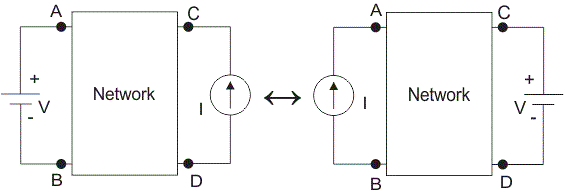
Fig 34 Network from which reciprocity is described
When the excitation is a voltage and response is current then short circuit conditions are implied at both ends. In this theorem, we can also apply the current source at one end and measure the open-circuit voltage at the other end, and open circuit conditions are implied at both ends. The assumptions for the theorem to apply to the network are
i) All initial conditions are zero.
ii) There is only one source of excitation in the network.
iii) The network is linear.
iv) The dependent sources are excluded in the network even if they are linear.
Q) Verify the Reciprocity theorem for the given network?
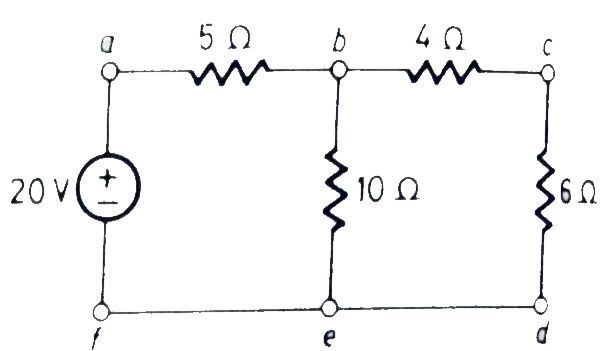
Fig 35 Circuit Diagram
Sol: The value of current Ix flowing due to 20V source is
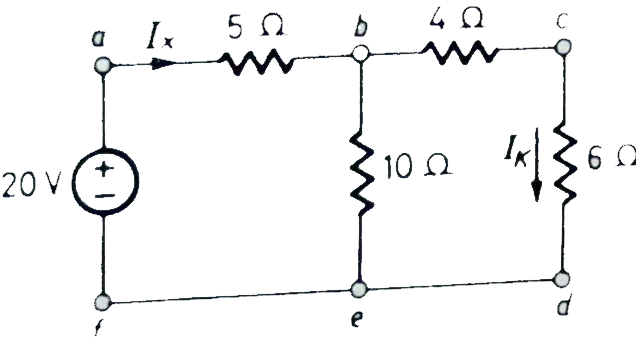
Fig 36 When 20V is at its place
Ix =  = 2A
= 2A
By current Division
Ik = Ix = 1A
= 1A
Now the voltage source of 20V is connected to branch cd. The current source now will be given as
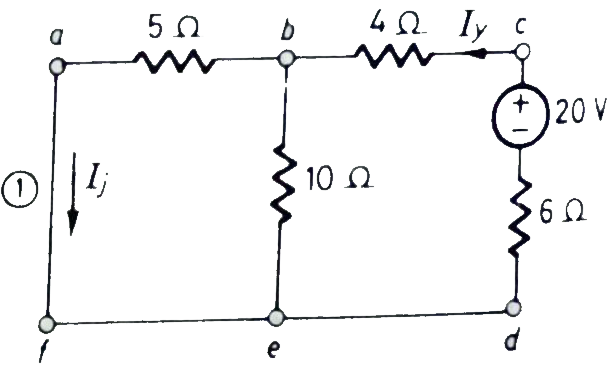
Fig 37 When 20V is connected to the cd
Iy=  = 3/2 A
= 3/2 A
Then Ij = Iy  = 1A
= 1A
From above we see that Ik = Ij = 1A
The reciprocity theorem is verified.
According to this theorem, any resistance in the network can be replaced by a voltage source that has zero internal resistance and a voltage equal to the voltage drop across the replace resistance due to the current which was flowing through it.
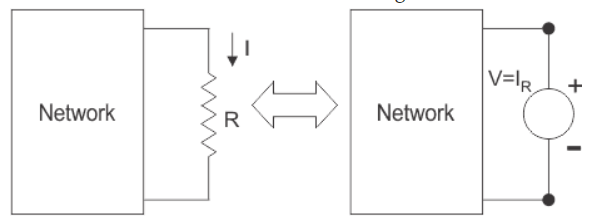
Fig 38 Compensation Theorem
As seen from the figure above the resistance R carrying current, I can be replaced by a voltage V=IR. This is the basic concept of compensation theorem.
Voltage and current sources
1. Voltage Source: A voltage source always have a resistance in series.

Ideal source
R = 0
Practical = 2 - 5Ω
I = 0

Fig 39 Voltage source
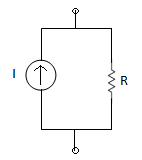
2. Current Source: Always have R parallel with the source.
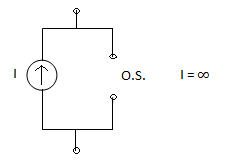
Practical = Mega Ω
Ideal =  I =
I =
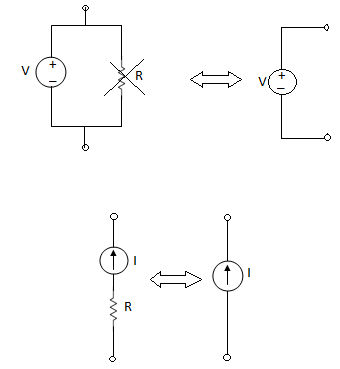
Fig 40 Current Source
Dependent and Independent sources
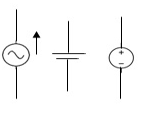
 Fig 40 Independent Source
Fig 40 Independent Source
few either
AC or DC 
dc

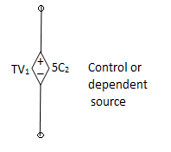
Fig 41 Independent Source
Key takeaway
For voltage source R is always in series
For current source R is always in parallel
NODE ANALYSIS
For these, we assume every node as a voltage point and write the current equation for every element. For the current source, the current entering is negative.
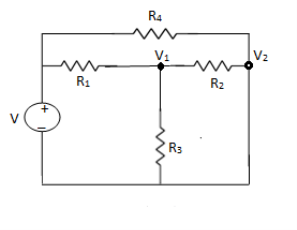
Fig 42 Circuit for Node analysis
For node V1

For node V2

For V

Example: Using nodal analysis find the voltage across 5resistor.
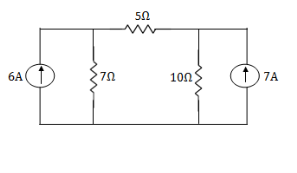
Solution:
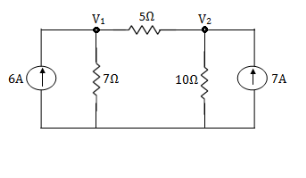
For V1



For V2



Solving 1 and 2:


For 5 voltage = 
= -50.9 + 57.27
= 6.37V
Key takeaway
We use Nodal analysis in those circuits where we need to find the voltage. The loop analysis is applied to the circuits when we want to calculate the branch or loop currents.
The two networks are said to be dual if the mesh equation of one network is equal to the node equation of the other.
Let us consider the RLC circuit
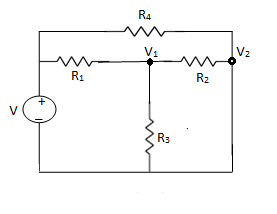
Fig 43 RLC Circuit
Applying KVL we have
v(t) = ri(t) + L  +
+ 
So, dual of the above network will be
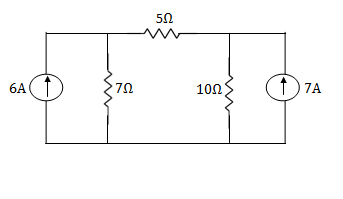
Fig 44 Dual of RLC circuit
i(t) = Gv(t) + C  +
+ 
Steps for construction of Dual Network: -
i) In each loop place a dot. This internal dot corresponds to an independent node in the dual network.
ii) Outside network place a dot. This is called the datum node is a dual network
iii) Connect all the adjacent loops by dashed lines crossing common branches.
iv) In a dual network, this common branch is replaced by its dual element.
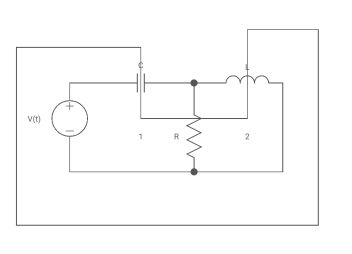
Fig 45 Circuit whose dual is to make
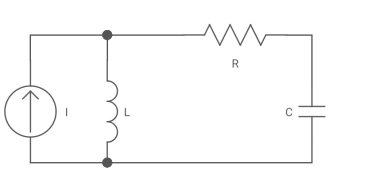
Fig 46 Dual of the above circuit
Key takeaway
Some important duals are given below.
Loop | Node | Loop | Node |
Current | Voltage | Number of Loops | Number of nodes |
Inductance | Capacitance | Link | Tree branch |
Resistance | Conductance | Link current | Tree branch voltage |
Branch Current | Node Voltage | Tree branch current | Link voltage |
Mesh or Loop | Node or pair | Tie Set | Cut Set |
Loop Current | Node pair Voltage | Short Circuit | Open Circuit |
Mesh Current | Node Potential | Parallel path | Series path |
|
|
|
|
References:
Education, 2013.
4. C. K. Alexander and M. N. O. Sadiku, “Electric Circuits”, McGraw Hill Education, 2004.
5. K. V. V. Murthy and M. S. Kamath, “Basic Circuit Analysis”, Jaico Publishers, 1999.